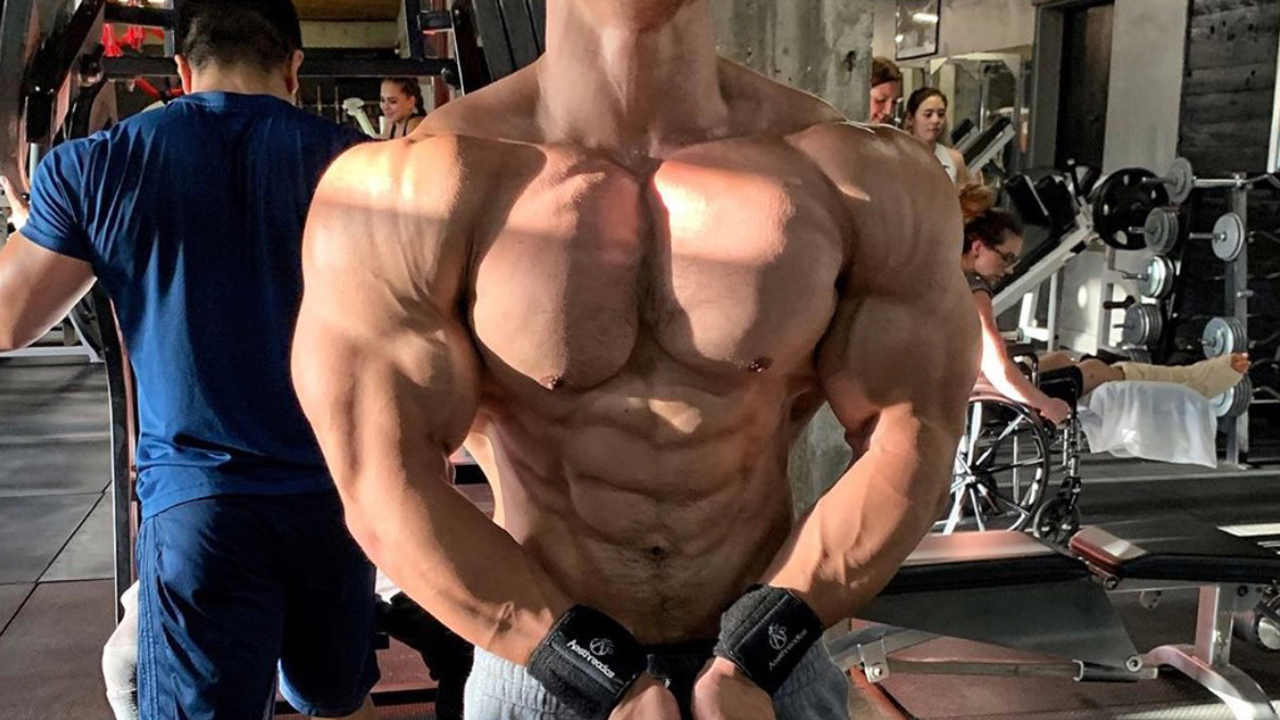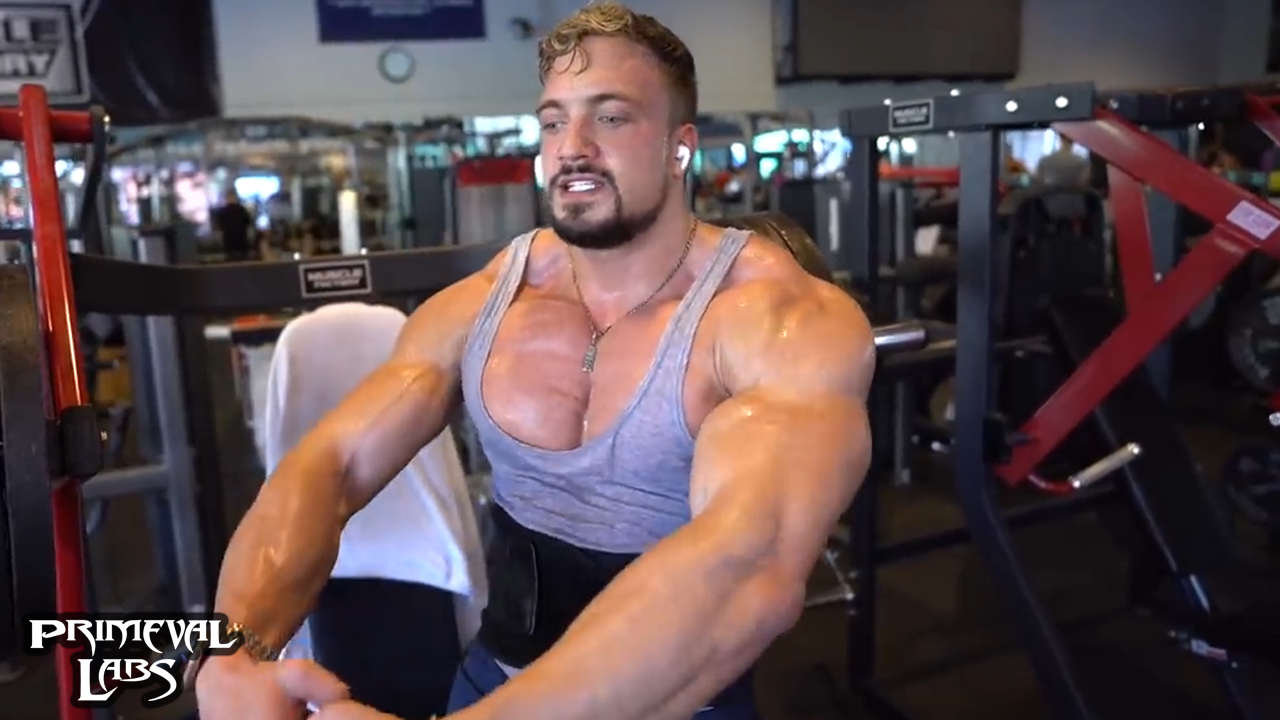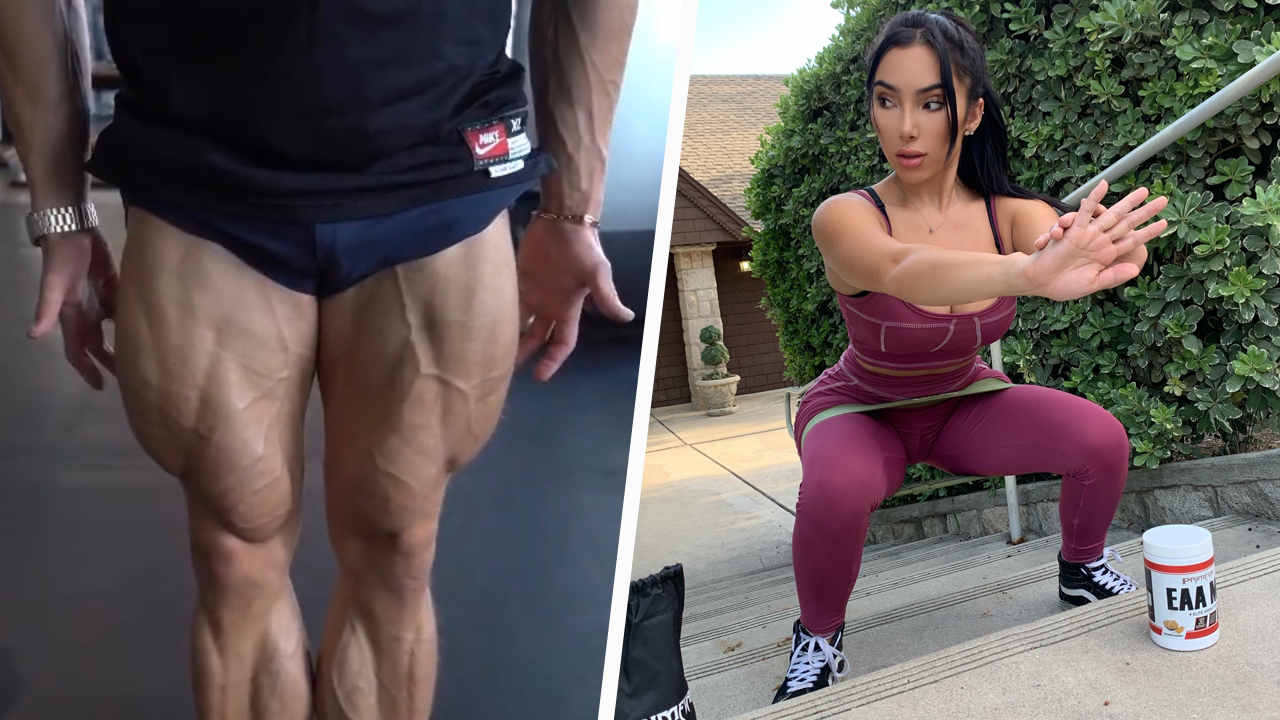If you’re reading this, then it’s pretty cut and dry that you want to build muscle. More specifically, you want a bigger, broader, stronger chest.
Now, you may (or may not) have had some success with your previous muscle-building ventures, but, let’s not kid ourselves, we all want more.
More strength.
More power.
More muscle.
And, that’s exactly what you’re going to get with this new GET BIG training series.
We’ll give you the tips, mindset, and training pointers you need to shatter plateaus, break PRs, and build some serious muscle.
LET’S GO!
Tips for Building Bigger, Stronger Pecs
Make Every Set Count
There’s a never ending debate between volume and intensity.
Whichever side of the fence you may fall on, there’s no denying that both play an important role in helping you build a big chest.
Not only do you have to push your muscles to a high level of fatigue (intensity), you also need to make sure enough total work is done to force the muscles to adapt, recover, and grow.
Too often volume junkies fail to see significant progress from their training programs, because while they might be doing enough volume, those sets aren’t all that fatiguing.
The “make every set count” training philosophy is simple -- you will push each set for as many quality reps as possible, stopping the set when your form starts to break down or when you feel like you might fail on the next rep.
Training this way ensures that you’re pushing your muscles to the brink and getting the most muscle building bang for every set you perform during your training session.
Use a Variety of Exercises
Another common pitfall many individuals make when trying to build a bigger chest is that they rely solely on the barbell bench press.
While this is a mighty fine exercise to develop raw strength and power, it’s not only exercise you should do for your chest.
The reason for this is that the muscle fibers of the chest run at different angles, which means you need to perform a variety of exercises that emphasize each region of the pecs (upper, middle, and lower).
The flat bench press does an excellent job of overloading the sternal head of the pecs, while the low incline press preferentially loads the clavicular (upper) head of the pecs.
Incorporating a variety of chest exercises will help ensure greater overall chest development while also helping offset any potential overuse injuries from constantly performing the same 1-2 exercises all the time.
Train Both Functions of the Chest
Presses of all kinds (including dips and push ups) are great for addressing the flexion function of the pecs, but they have a shortcoming -- they do not take your shoulder through the full horizontal adduction, which is another function of the pecs.
This is why in addition to your heavy compound presses, you also should include some isolation movements like cable flys, pec dec, or cable crossovers.
These exercises (cable flyes/crossovers) in particular are designed to take the arms fully over the midline of the body, giving more complete adduction and contraction of the pecs.
Don’t Neglect the Triceps
To get a big chest, you need to get stronger on your presses.
At the same time, presses don’t just work the pecs, they also involve the front delts and triceps.
Triceps in particular are a weak point for many lifters, and ultimately become the limiting factor in chest workouts, instead of the pecs.
As such, over the coming weeks, in addition to hammering the pecs with heavy weights, you’ll also be beefing up those tricepticons.
Use a Full Range of Motion
Sure, half-repping your way through a workout lets you use more weight and give the illusion of being an impressive lifter,
But, what it’s really doing is limiting your potential for muscle growth, while also adding undue stress to your joints, ligaments, and connective tissue.
Using a full range of motion helps reduce injury rates while providing a greater muscle building stimulus since your muscles have to do more overall work by moving a load over a greater distance.
While we’re on the topic, avoid jerky, choppy reps as these can also lead to strains and pains. On every rep, focus on moving the weights through a full range of motion using smooth, constant tension repetitions.
Get Down on the Floor
Many lifters experience shoulder pain when bench pressing, the dumbbell floor press is a variation of the conventional barbell bench press that is usually better tolerated as it allows for a neutral grip which places the shoulders in a more favorable, stable position).
Further, pressing from the floor also limits the amount of shoulder extension that can occur when you lower the weights, which may help reduce stress on the shoulder joint while providing a great training stimulus for the chest and triceps.
Finally, traditional bench presses can be a bother for individuals with low back issues.
Floor presses reduce lumbar extension that accompanies overarching the low back during bench presses.
If barbell presses bother you, substitute floor presses as an equally effective exercise for building a bigger chest.
Get Big Chest Workout
Rather than hammer your chest with 15-20 sets in a single workout like most internet training programs suggest, we’re splitting the volume across two training sessions.
This allows for a higher quality amount of work each week as you’re splitting the work between two sessions, which ultimately helps drive more muscle growth.
Additionally, since the focus of this program is to grow your chest, we suggest dialing back the volume and intensity on the other body parts and only training them one time per week. This allocates additional resources to help your chest recover and grow during this specialization phase.
Here are the workouts:
|
Chest Workout A |
Sets |
Reps |
|
Barbell Bench Press |
3 |
8-10 |
|
Incline Dumbbell Bench Press |
3 |
10-12 |
|
Pec Dec |
3 |
12-15 |
|
Skull Crushers |
2 |
10 |
|
Close Grip Push Ups |
2 |
AMRAP |
|
Chest Workout B |
Sets |
Reps |
|
Incline Bench Press |
3 |
8-10 |
|
Chest Dips (Add weight if needed) |
3 |
10-12 |
|
Cable Crossovers |
3 |
12-15 |
|
Close Grip Press |
2 |
8-10 |
|
Cable Overhead Tricep Extension |
2 |
12-15 |
Recommended Supplements
Proper diet and hard training are the cornerstones of any mass gaining cycle, but having the right supplements can help make the process of recovery and growth more efficient.
Here’s are some of our favorite supplements to use when focused on building muscle.
Mega Pre Black
Mega Pre Black is a premium quality, all-in-one pre workout supplement formulated to deliver intense energy, focus, performance, and pumps.
Every serving of Mega Pre Black packs quality doses of research-backed ingredients including L-Citrulline, Betaine, Beta Alanine, and elevATP to support athletic performance and help delay the onset of fatigue.
Mega Pre Black also contains a comprehensive blend of energy and focus boosters, including caffeine, Dynamine, TeaCrine, and Huperzine to bolster motivation and concentration during and after training.
Intracell 7 Black
Intracell 7 Black is an advanced training fuel containing a synergistic matrix of performance-boosting carbohydrates, electrolytes, amino acids, and blood flow support agents.
Intracell 7 Black includes a novel blend of four carbohydrates including ModCarb, Carb10, Cluster Dextrin and Palatinose, providing an efficient energy source for muscle cells while simultaneously supporting greater stamina, performance, and pumps.
A full spectrum of essential amino acids is also included to support protein synthesis and help resist the catabolic effects of intense resistance training.
Intracell 7 Black also includes blood flow-supporting agents like VasoDrive-AP to facilitate nutrient delivery, support performance, and enhance muscle pumps.
ISOLIT
Consuming enough protein is essential to recovery and growth
ISOLIT is an ultra-premium protein powder containing 100% pure, triple cold-filtered whey protein isolate (4x smaller than micro filtered!). This yields a protein powder that contains high amounts of extremely bioavailable protein while delivering low amounts of carbs, lactose, and fat.
Every serving supplies 25 grams of complete whey protein.
To further support digestion and absorption, ISOLIT also contains DigeSEB Plus® -- a patented complex of digestive enzymes including amylases, protease blend I & II, lactase, lipase, hemiSEB, cellulase, invertase, and diastase.
Creatine
No supplement stack focused on muscle building is complete without creatine monohydrate -- the king of bodybuilding supplements.
Creatine enhances ATP production in the body and has been found to support gains in size, strength, and performance. Plus, creatine is incredibly well studied and not only proven to be effective but safe.
Primeval Labs Creatine delivers 5 grams of creatine monohydrate per serving with no added fillers, sweeteners, coloring or anything else -- just pure creatine monohydrate.

















Leave a comment
This site is protected by hCaptcha and the hCaptcha Privacy Policy and Terms of Service apply.